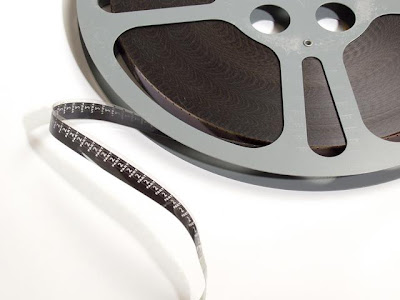
Here the film is assembled by the film editor. The modern use of video in the filmmaking process has resulted in two workflow variants: one using entirely film, and the other using a mixture of film and video.
In the film workflow, the original camera film (negative) is developed and copied to a one-light workprint (positive) for editing with a mechanical editing machine. An edge code is recorded onto film to locate the position of picture frames.
Since the development of non-linear editing systems such as Avid, Quantel or Final Cut Pro, the film workflow is used by very few productions.
In the video workflow, the original camera negative is developed and telecined to video for editing with computer editing software. A timecode is recorded onto video tape to locate the position of picture frames. Production sound is also synced up to the video picture frames during this process.
The first job of the film editor is to build a rough cut taken from sequences (or scenes) based on individual "takes" (shots). The purpose of the rough cut is to select and order the best shots. The next step is to create a fine cut by getting all the shots to flow smoothly in a seamless story. Trimming, the process of shortening scenes by a few minutes, seconds, or even frames, is done during this phase. After the fine cut has been screened and approved by the director and producer, the picture is "locked," meaning no further changes are made. Next, the editor creates a negative cut list (using edge code) or an edit decision list (using timecode) either manually or automatically. These edit lists identify the source and the picture frame of each shot in the fine cut.
Once the picture is locked, the film passes out of the hands of the editor to the sound department to build up the sound track. The voice recordings are synchronised and the final sound mix is created. The sound mix combines sound effects, background sounds, ADR, dialogue, walla, and music.
The sound track and picture are combined together, resulting in a low quality answer print of the movie. There are now two possible workflows to create the high quality release print depending on the recording medium:
- In the film workflow, the cut list that describes the film-based answer print is used to cut the original color negative (OCN) and create a color timed copy called the color master positive or interpositive print. For all subsequent steps this effectively becomes the master copy. The next step is to create a one-light copy called the color duplicate negative or internegative. It is from this that many copies of the final theatrical release print are made. Copying from the internegative is much simpler than copying from the interpositive directly because it is a one-light process; it also reduces wear-and-tear on the interpositive print.
- In the video workflow, the edit decision list that describes the video-based answer print is used to edit the original color tape (OCT) and create a high quality color master tape. For all subsequent steps this effectively becomes the master copy. The next step uses a film recorder to read the color master tape and copy each video frame directly to film to create the final theatrical release print.
Finally the film is previewed, normally by the target audience, and any feedback may result in further shooting or edits to the film.


No comments:
Post a Comment